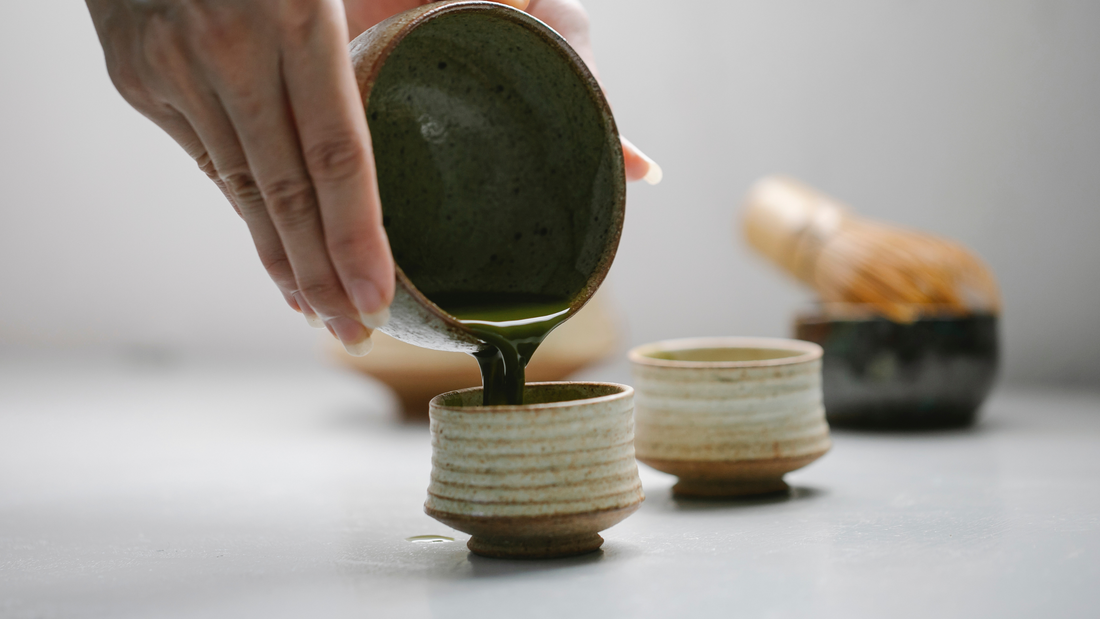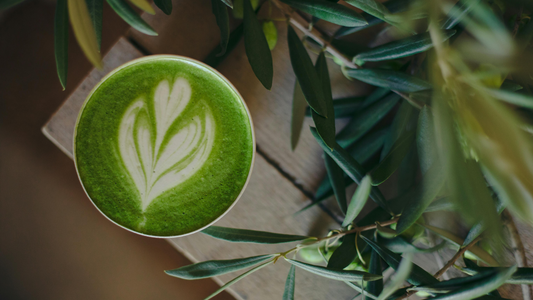The traditional matcha ceremony: history and key stages

The traditional matcha ceremony, or Chado, is much more than just tea tasting. It embodies an art, a philosophy and a path to spiritual awakening, transmitted from generation to generation in Japan. This article explores the deep history, key milestones, and cultural significance of this ancient practice.
History of the matcha ceremony
Origins and introduction to Japan
Matcha, this fine and luminous green tea powder, has its roots in Zen Buddhist rituals. Imported from China to Japan in the 12th century by monks, matcha has become over the years a pillar of Japanese society, symbolizing the quest for purity and tranquility.
Evolution and cultural influence
The tea ceremony evolved into a formal art (under the influence of tea masters like Sen no Rikyu in the 16th century) incorporating unique aesthetic and philosophical elements. Simplicity, harmony, respect, and tranquility have become the pillars of this practice.
Preparing for the ceremony
The ceremony space
Each element of the ceremony space is carefully chosen to reflect the principles of wabi-sabi, finding beauty in imperfection and ephemerality. The Chashitsu, or tea room, is often minimalist, encouraging participants to focus on the present moment.
Utensils and roles
The utensils used, from the Chawan (tea bowl) to the Chasen (bamboo whisk), are works of art in themselves, selected for their beauty and functionality. The Chaji, or master of ceremonies, guides guests through a series of precise gestures and rituals, creating an immersive and meditative experience.
Key stages of the ceremony
- Purification : It all begins with the purification of the utensils and the space, symbolizing the inner cleansing necessary to fully appreciate the experience.
- Matcha Preparation : The Chaji carefully measures the matcha, then uses the Chasen to whisk the tea into a rich, velvety foam, in a motion that requires both strength and delicacy.
- Tasting : Guests are invited to enjoy matcha in accordance with etiquette, with every gesture having meaning, from the positioning of the hands to the rotation of the bowl before drinking.
- Meditation : Moments of silence are integrated, allowing for inner reflection and a deeper connection with other participants.
- Conclusion : The ceremony ends with the cleaning of the utensils, a gesture that symbolizes the return to simplicity and gratitude for the shared experience.
Spiritual and philosophical significance
The matcha ceremony is a path to mindfulness, inviting contemplation and appreciation of the beauty in the ordinary. Each step, from preparation to tasting, is a lesson in presence, harmony with nature, and mutual respect.
Modern and global influence
Today, the matcha ceremony is growing in popularity around the world, not only as a culinary art form but also as a meditative practice. She inspires a new generation to slow down and find joy in daily rituals.
By creating your own morning ritual with Tsuki Matcha, you're not only choosing quality matcha; you opt for 100% organic Japanese matcha. This choice ensures you an authentic experience, bringing you closer to the deep and spiritual origins of Chado.











